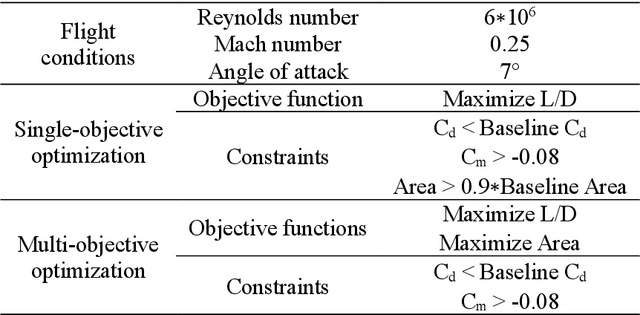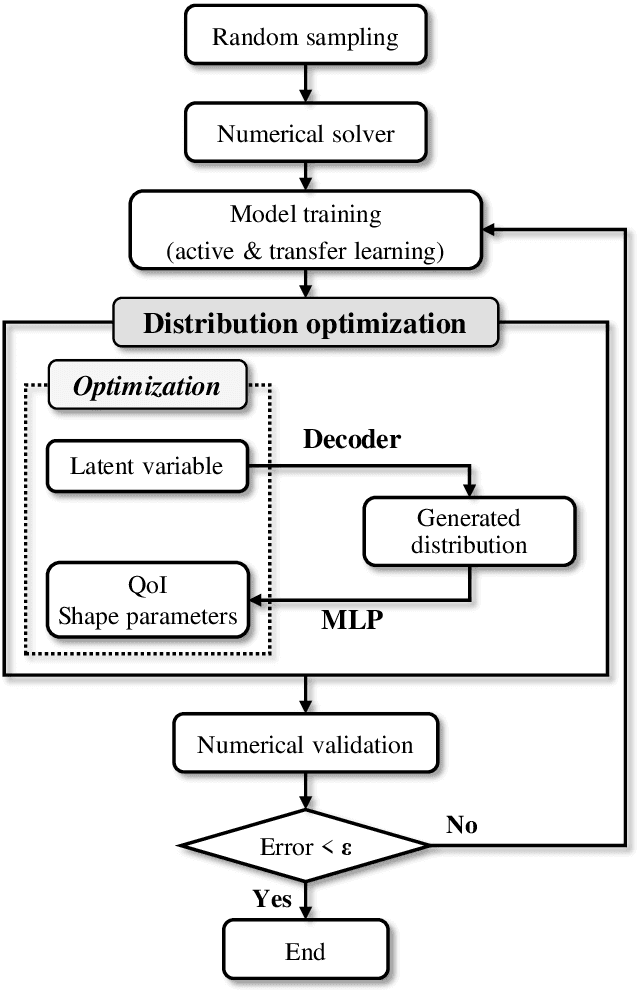Inverse design optimization framework via a two-step deep learning approach: application to a wind turbine airfoil
Paper and Code
Aug 19, 2021



Though inverse approach is computationally efficient in aerodynamic design as the desired target performance distribution is specified, it has some significant limitations that prevent full efficiency from being achieved. First, the iterative procedure should be repeated whenever the specified target distribution changes. Target distribution optimization can be performed to clarify the ambiguity in specifying this distribution, but several additional problems arise in this process such as loss of the representation capacity due to parameterization of the distribution, excessive constraints for a realistic distribution, inaccuracy of quantities of interest due to theoretical/empirical predictions, and the impossibility of explicitly imposing geometric constraints. To deal with these issues, a novel inverse design optimization framework with a two-step deep learning approach is proposed. A variational autoencoder and multi-layer perceptron are used to generate a realistic target distribution and predict the quantities of interest and shape parameters from the generated distribution, respectively. Then, target distribution optimization is performed as the inverse design optimization. The proposed framework applies active learning and transfer learning techniques to improve accuracy and efficiency. Finally, the framework is validated through aerodynamic shape optimizations of the airfoil of a wind turbine blade, where inverse design is actively being applied. The results of the optimizations show that this framework is sufficiently accurate, efficient, and flexible to be applied to other inverse design engineering applications.
 Add to Chrome
Add to Chrome Add to Firefox
Add to Firefox Add to Edge
Add to Edge